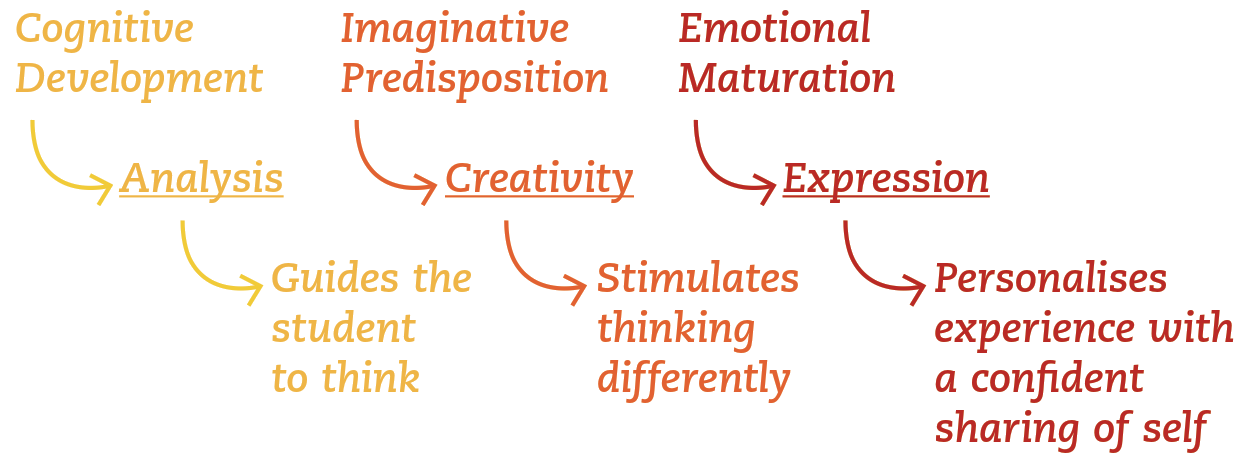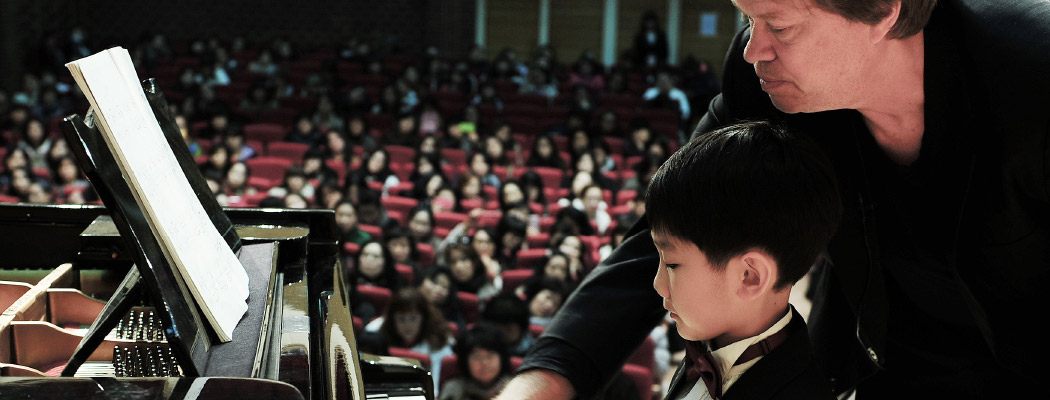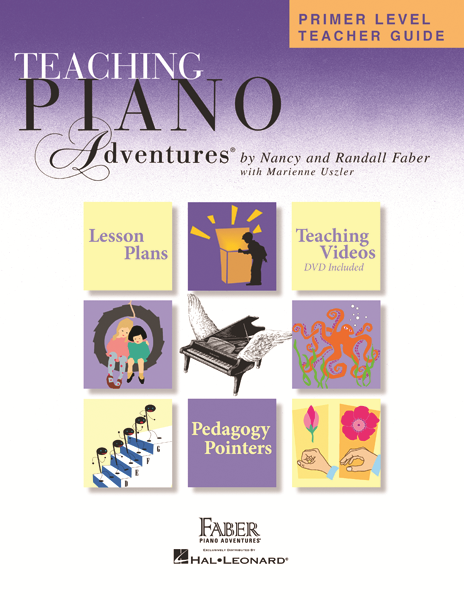‘Short bursts of creativity make learning more exciting!’ Randall Faber
Personal and artistic growth require reflection and a willingness to take a new direction. Try an infusion of Analysis-Creativity-Expression. While making A-C-E musicians you’ll become an A-C-E teacher. And, in the process, you’ll raise the artistry of your teaching and the artistry of your studio.
The Piano Adventures® teacher is committed to personal growth, as a teacher and musician. The development of your own musical insight, creativity, and artistry will pay dividends in the way you teach and interact with students. Be an A-C-E teacher to make A-C-E musicians.
As music teachers, what we teach goes beyond musical concepts, notes, and skills. Part of our collective mission is to guide our students’ personal development in a more general manner, including focus on…

A-C-E™ is an apt summation of our teaching philosophy: Analysis, Creativity and Expression comprising the key elements of artistry. We teach with A-C-E to promote artistic capabilities and qualities — an artistry mindset that carries through life.
See it in action!
This pioneering Teacher Guide for the Primer Lesson Book is a one-of-a-kind resource! It presents a systematic approach for teaching beginning students using the Fabers’ philosophy of Analysis, Creativity, and Expression (A-C-E™).
- The included comprehensive DVD features model teaching for each piece in the Lesson Book. The videos feature Nancy Faber working with her students, offering teachers a glimpse into the creative techniques and activities used in her studio.
- Pedagogy Articles are placed throughout the manual. These foundational articles discuss how to teach technique, guide reading, and cultivate creativity. A boost for teaching!
- The substantial Appendix includes additional, fun duets for rhythm work and improvisation, and a Thematic Index for planning group lessons and recitals.
Teaching with A-C-E™
[columns_row width=”third”]
[column]
Analysis
- The origin of the word ‘analysis’ is Greek. It means to break apart, to loosen. When teaching a piece, ‘break it apart’ to show how it is put together. This is the most effective way to demonstrate analysis.
- Always look for patterns— whether rhythmic, melodic, harmonic, or motivic. Seeing and comparing patterns is the basic principle of analysis. Guide attention.
- ‘Chunking’ of patterns frees attention. When the student recognises the same idea — tonic to dominant, for example — in a new context, you’ll know chunking is taking place.
- Pattern recognition is visual, aural and kinesthetic. Analysis is not just visual. Can your student hear imitations, transposed motives, repeated rhythms?
[/column]
[column]
Creativity
- Short bursts of creativity make lessons exciting. These explorations don’t have to be fancy or come with explanations. Just do it!
- Ask the student to set the tempo, create a new ending, play the piece in a different range, choose a new dynamic. Start by asking—what if?
- Create opportunities for the student to make choices. That’s an easy way to encourage self-expression. A personality can emerge. You might be surprised!
[/column]
[column]
Expression
- Expression begins with listening. If your own playing is always colourful and nuanced, the student will be inspired to imitate it.
- A story, a colourful analogy, or reference to something in the student’s own life is an easy and effective way to elicit an emotional reaction. This encourages the student to personalise the piece.
- The CD or MIDI accompaniments can enrich the student’s involvement with the spirit and mood of a piece. Hearing instrumental colours and special effects can stimulate the student to join in and play more musically.
[/column]
[/columns_row]
Professional development with A-C-E™
[columns_row width=”third”]
[column]
Analysis
- Apply ‘chunking’ to your own learning. The patterns you recognise and integrate will revitalise your awareness of this effective learning process. That, in turn, will transfer into how you present concepts and skills to students.
- Consider your effectiveness as a teacher. Evaluate your teaching as you would a musical performance. Is it communicative? Well-prepared? Inspiring?
[/column]
[column]
Creativity
- ‘Break apart’ and ‘loosen up’ your own teaching routines. Don’t always structure lessons in the same order. Begin a lesson with a surprise, a playful improvisation, or a stimulating question. Something new is always energising.
- Relax your reliance on the printed score. Improvise accompaniments to student performances. Demonstrate concepts—a tempo, for example, or what it means to play with a rich, deep sound—with spontaneous music-making.
[/column]
[column]
Expression
- Enrich your own vocabulary. Choose colourful words, make lively comparisons, tell stories, ask questions. These are effective ways to awaken student interest.
- A demonstration is more powerful than an explanation. Play expressively.
[/column]
[/columns_row]

